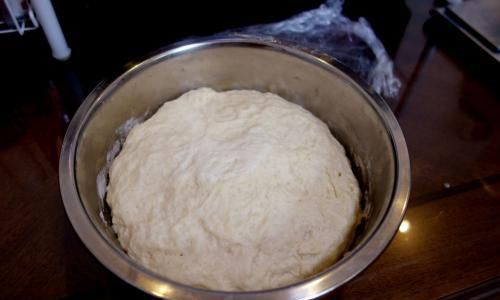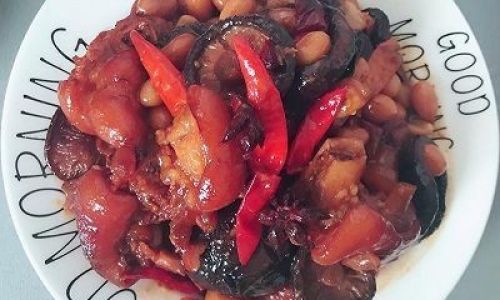Table of content
Flatbreads, a staple in global cuisines, come in countless forms—from the pillowy pockets of pita to the chewy folds of tortillas and the crisp edges of Indian papadum. These versatile carbs often spark a common kitchen query: Is refrigeration a friend or foe to their texture and flavor? This article delves into the science, practicality, and cultural nuances of storing flatbreads in the fridge, offering evidence-based advice to keep your wraps, pizzas, and snacks at their best.
Understanding Flatbreads: A Spectrum of Ingredients and Uses
Flatbreads are defined by their simplicity—typically made from flour, water, salt, and sometimes yeast or leavening agents. However, variations abound:

- Unleavened varieties (e.g., chapati, roti) rely on heat to puff up.
- Leavened options (e.g., naan, pizza dough) use yeast or baking powder for rise.
- Gluten-free alternatives (e.g., corn tortillas, cassava flatbreads) cater to dietary needs.
Their uses are equally diverse: wraps for fillings, bases for pizzas, scooping tools for dips, or standalone snacks. This diversity means storage needs can vary widely. A corn tortilla’s reaction to refrigeration, for instance, may differ from a butter-rich paratha.
The Science of Refrigeration: How Cold Affects Flatbreads
Refrigeration slows microbial growth and enzymatic activity, extending shelf life. However, cold temperatures also alter starch and moisture dynamics:
- Starch Retrogradation: Starches in bread recrystallize when cooled, leading to a firmer, drier texture. This explains why refrigerated bread often feels “stale.”
- Moisture Migration: Fluctuations in humidity can cause flatbreads to absorb fridge odors or become gummy if improperly sealed.
- Fat Solidification: Flatbreads with butter, oil, or dairy (e.g., naan) may harden as fats solidify, affecting flexibility.
Key Takeaway: Refrigeration is a trade-off—longevity vs. texture. The impact depends on ingredients, storage methods, and reheating techniques.

When Refrigeration Makes Sense: Practical Scenarios
A. Short-Term Storage (1–3 Days)
- Homemade Flatbreads: Lack preservatives, so refrigeration prevents mold in humid climates.
- Open Packages: Store-bought flatbreads exposed to air benefit from chilling to slow staling.
- Hot Climates: In areas without air conditioning, refrigeration guards against rapid spoilage.
B. Long-Term Needs (Beyond 3 Days)
- Freezing vs. Refrigeration: For over a week, freezing is superior (see Section 6). Refrigeration is a stopgap for 3–5 days.
- Bulk Prep: If you’ve made a large batch, refrigerate portions you’ll use within days; freeze the rest.
The Downsides of Refrigeration: Risks to Avoid
A. Texture Degradation
- Staleness: Refrigerated flatbreads may become dry or tough.
- Sogginess: Poorly sealed containers can trap condensation, leading to a limp texture.
B. Flavor Loss
- Odor Absorption: Flatbreads can pick up fridge smells (e.g., onions, cheese) if not airtight.
- Oxidation: Exposure to air accelerates rancidity in oil-rich varieties.
C. Mold Risks
- Inconsistent Cooling: If your fridge has warm spots, moisture buildup can promote mold.
Best Practices for Refrigerating Flatbreads
A. Preparation Steps
- Cool Completely: Let freshly cooked flatbreads reach room temperature to prevent condensation.
- Layer with Parchment: Separate pieces with parchment to prevent sticking.
- Airtight Containers: Use zip-top bags, reusable silicone pouches, or sealed containers. Squeeze out excess air.
B. Optimal Fridge Placement
- Avoid the Door: Temperature fluctuations here are worst. Store in the main compartment.
- 远离 Strong Odors: Place away from pungent foods like garlic or fish.
C. Reheating Techniques
- Stovetop: Warm in a dry skillet for 1–2 minutes per side to restore pliability.
- Oven: Wrap in foil and bake at 350°F (175°C) for 5–7 minutes.
- Microwave: Mist with water, cover with a damp paper towel, and heat in 10-second bursts.
Refrigeration vs. Alternatives: Weighing Your Options
| Method | Shelf Life | Texture Impact | Best For |
|---|---|---|---|
| Room Temp | 1–3 days | Minimal | Store-bought, low-humidity climates |
| Refrigeration | 3–5 days | Moderate | Homemade, humid climates, short-term |
| Freezing | 2–3 months | Low (if sealed) | Long-term storage, bulk batches |
Reviving Refrigerated Flatbreads: Tips for Restoring Freshness
- Steam Method: Hold over boiling water in a steamer basket for 30 seconds.
- Grill Marks: Toast briefly on a grill for char and softness.
- Brush with Oil: Lightly coat with olive oil before reheating to add moisture.
Signs Your Flatbread Has Gone Bad
- Mold: Fuzzy spots (discard immediately).
- Off Smell: Sour or rancid odors indicate spoilage.
- Unusual Texture: Excessive dryness, sliminess, or brittleness.
Cultural Perspectives: How Different Cuisines Store Flatbreads
- Middle Eastern Traditions: Pita is often stored in cloth bags at room temp, refreshed on a hot griddle.
- Indian Households: Rotis are stacked in insulated containers (like roti boxes) to retain warmth.
- Mexican Kitchens: Tortillas are kept in sealed plastic bags to prevent drying, sometimes refrigerated in humid regions.
Debunking Myths About Flatbread Storage
-
Myth 1: “Refrigeration ruins all flatbreads.”
Reality: Properly sealed, most varieties tolerate 3–5 days. Thicker breads (e.g., naan) fare better than thin ones (e.g., crepes). -
Myth 2: “Freezing makes flatbreads inedible.”
Reality: Frozen flatbreads, when thawed and reheated correctly, retain excellent quality. -
Myth 3: “Oil prevents staling.”
Reality: While fat adds moisture, it doesn’t halt starch retrogradation. Refrigeration still impacts texture.
Expert Tips for Prolonging Freshness
- Add Preservatives (Carefully): A pinch of vinegar or citric acid can inhibit mold in homemade batches.
- Use a Bread Box: In dry climates, a bread box offers moderate humidity control without refrigeration.
- Portion Control: Freeze in single-serving packs to avoid thawing and refreezing.
Conclusion: Balancing Convenience and Quality
Refrigerating flatbreads is a viable strategy for short-term preservation, provided you prioritize airtight storage and mindful reheating. While texture changes are inevitable, they’re manageable with the right techniques. For longevity, freezing remains unmatched. Ultimately, the decision hinges on your climate, usage frequency, and tolerance for slight texture shifts.
By understanding the interplay of ingredients, temperature, and moisture, you can ensure your flatbreads remain a reliable canvas for culinary creativity—whether stuffed, topped, or enjoyed plain. Experiment, adjust, and savor the convenience of a well-stored stash!






0 comments